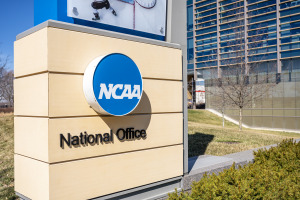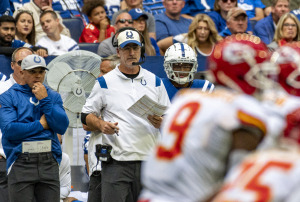
IU Indianapolis fires basketball coach Corsaro over ‘treatment’ of players
Paul Corsaro went 10-24 overall and 6-14 in the Horizon League in his only season with the Jaguars.

Paul Corsaro went 10-24 overall and 6-14 in the Horizon League in his only season with the Jaguars.

Proposed roster caps have prevented U.S. District Judge Claudia Wilken from approving a $2.78 billion settlement, which is designed to allow schools to pay players directly beginning later this year.

Attorneys handling the $2.8 billion NCAA settlement proposed a massive do-over Wednesday when it comes to roster limits.

An attorney in the $2.8 billion legal case reshaping college sports said an agreement reached with the Indianapolis-based NCAA should address U.S. District Judge Claudia Wilken’s concerns.

The investigation was conducted by international law firm Jones Day, which IU hired to be an independent voice in reviewing player allegations that the exams were sexual in nature.

This weekend’s College Rugby Association of America event marks the first national sporting event that Riverside Sports has secured for Kuntz Stadium, which is in the midst of a $45 million overhaul.

The lawsuit, which included 16 total players who played before June 16, 2016, claimed that the NCAA had enriched itself by utilizing their names, images and likenesses to promote its men’s basketball tournament.

The judge overseeing the rewriting of the college sports rulebook threw a potentially deal-wrecking roadblock into the mix Wednesday, insisting parties in the antitrust lawsuit redo the part of the proposed settlement.

Pete Yonkman, the founder of two NIL collectives, foresees a blizzard of lawsuits and a college sports landscape in which a relative handful of schools can attract top talent and compete for championships.

The nine proposals passed by the NCAA board were largely expected but still mark a defining day in the history of college sports.

Gay, senior vice president and CMO of OneAmerica Financial, discusses the importance of learning your role in a large organization while understanding how everyone contributes, when to celebrate your wins and when to push your team.

Attorneys offered only a few tweaks to the sprawling deal announced last year that will clear the way for schools to begin sharing millions in revenue with their athletes.

U.S. District Judge Claudia Wilken heard testimony from athletes including LSU gymnast and millionaire influencer Olivia Dunne on Monday. She acknowledged their concerns and asked attorneys for fresh feedback on several topics.

Dempsey oversaw the organization’s move from the Kansas City suburbs to Indianapolis in 1999 and helped reimagine how the governing body could work best in the 21st century.

Darian DeVries’ annual average salary of $4.5 million would have been fourth among Big Ten Conference basketball coaches last season

At least four states are considering giving college athletes tax breaks on endorsement income.

Coach after coach, from Virginia’s Tony Bennett to Villanova’s Jay Wright, have walked away from college basketball, saying it no longer holds the appeal it once did.

The former Indianapolis Colts quarterback, who was hired as Stanford’s general manager last November, tapped his former head coach to helm the team as it searches for a new head coach.

Butler is one of 16 teams that will play in the new College Basketball Crown tournament, which runs Monday through Sunday in Las Vegas.

Big Ten player of the year Braden Smith added seven points and 15 assists to lead Purdue.